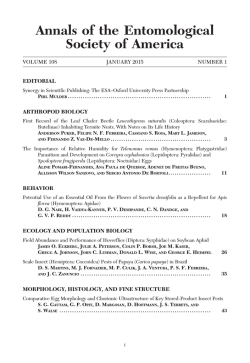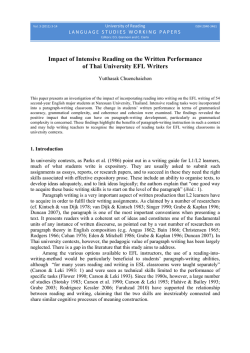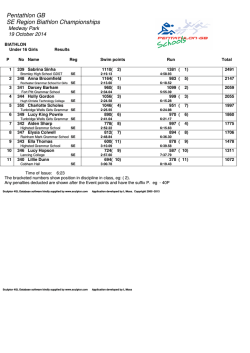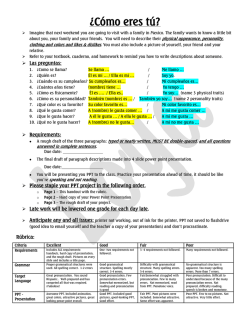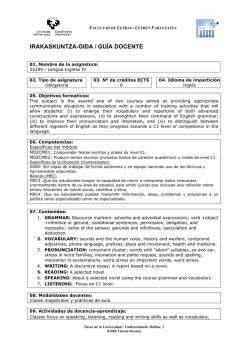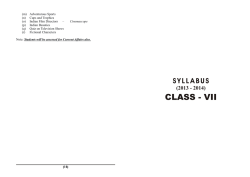
современный английский язык modern english grammar
Высшее профессиональное образование БАКАЛАВРИАТ О. В. АЛЕКСАНДРОВА, Т. А. КОМОВА СОВРЕМЕННЫЙ АНГЛИЙСКИЙ ЯЗЫК МОРФОЛОГИЯ И СИНТАКСИС MODERN ENGLISH GRAMMAR MORPHOLOGY AND SYNTAX Учебное пособие для студентов учреждений высшего профессионального образования, обучающихся по направлениям подготовки «Филология», «Педагогическое образование» (профиль «иностранный язык») 2е издание, исправленное 1 ÓÄÊ 811.111(075.8) ÁÁÊ 81.2Àíãë-2ÿ73 À465 Ð å ö å í ç å í ò û: äîêòîð ôèëîëîãè÷åñêèõ íàóê, ïðîôåññîð êàôåäðû èíîñòðàííûõ ÿçûêîâ ¹ 3 Ðîññèéñêîãî óíèâåðñèòåòà äðóæáû íàðîäîâ À. Ë. Ñåìåíîâ; äîêòîð ôèëîëîãè÷åñêèõ íàóê, äîöåíò, çàâ. êàôåäðîé çàïàäíîåâðîïåéñêèõ ÿçûêîâ è êóëüòóð Ñòîëè÷íîãî ãóìàíèòàðíîãî èíñòèòóòà Î. Ä. Âèøíÿêîâà Àëåêñàíäðîâà Î. Â. À465 Ñîâðåìåííûé àíãëèéñêèé ÿçûê : ìîðôîëîãèÿ è ñèíòàêñèñ = Modern English Grammar : Morphology and Syntax : ó÷åá. ïîñîáèå äëÿ ñòóä. ó÷ðåæäåíèé âûñø. ïðîô. îáðàçîâàíèÿ / Î. Â. Àëåêñàíäðîâà, Ò. À. Êîìîâà. — 2-å èçä., èñïð. — Ì. : Èçäàòåëüñêèé öåíòð «Àêàäåìèÿ», 2013. — 224 ñ. — (Ñåð. Áàêàëàâðèàò). ISBN 978-5-7695-9825-8 Ó÷åáíîå ïîñîáèå ñîçäàíî â ñîîòâåòñòâèè ñ Ôåäåðàëüíûìè ãîñóäàðñòâåííûìè îáðàçîâàòåëüíûìè ñòàíäàðòàìè ïî íàïðàâëåíèÿì ïîäãîòîâêè 032700 — Ôèëîëîãèÿ (êâàëèôèêàöèÿ «áàêàëàâð»), 050100 — Ïåäàãîãè÷åñêîå îáðàçîâàíèå (ïðîôèëü «èíîñòðàííûé ÿçûê», êâàëèôèêàöèÿ «áàêàëàâð»).  ó÷åáíîì ïîñîáèè ïðåäëàãàåòñÿ ôóíêöèîíàëüíûé ïîäõîä ê èçëîæåíèþ îñíîâíûõ ïðîáëåì ãðàììàòè÷åñêîé òåîðèè ñîâðåìåííîãî àíãëèéñêîãî ÿçûêà. Âñå òåîðåòè÷åñêèå âîïðîñû îáúÿñíÿþòñÿ ñ ïðèâëå÷åíèåì èëëþñòðàòèâíîãî ìàòåðèàëà èç àóòåíòè÷íûõ èñòî÷íèêîâ ðàçíûõ ôóíêöèîíàëüíûõ ñòèëåé àíãëèéñêîãî ÿçûêà. Äëÿ ñòóäåíòîâ ó÷ðåæäåíèé âûñøåãî ïðîôåññèîíàëüíîãî îáðàçîâàíèÿ. ÓÄÊ 811.111(075.8) ÁÁÊ 81.2Àíãë-2ÿ73 Îðèãèíàë-ìàêåò äàííîãî èçäàíèÿ ÿâëÿåòñÿ ñîáñòâåííîñòüþ Èçäàòåëüñêîãî öåíòðà «Àêàäåìèÿ», è åãî âîñïðîèçâåäåíèå ëþáûì ñïîñîáîì áåç ñîãëàñèÿ ïðàâîîáëàäàòåëÿ çàïðåùàåòñÿ ISBN 978-5-7695-9825-8 2 © Àëåêñàíäðîâà Î. Â., Êîìîâà Ò. À., 2013 © Îáðàçîâàòåëüíî-èçäàòåëüñêèé öåíòð «Àêàäåìèÿ», 2013 © Îôîðìëåíèå. Èçäàòåëüñêèé öåíòð «Àêàäåìèÿ», 2013 PREFACE The present manual of Modern English grammar is intended for the students of English at universities and teacher’s colleges and also for the students of political sciences, art and humanities at large taking English as the main subject. The manual is aimed at presenting a theoretical outline of English grammar as a system functioning in a variety of speech situations pragmatically oriented, when both linguistic competence and linguistic performance need further mastery and refinement. It is also aimed to help the students in forming the judgements of their own on questions of a proper choice and in using this or that grammar form, pattern, structure consciously and creatively to promote most efficiently the communication in English. The manual is devoted to the discussion of current state of English grammar. It consists of two major parts: Part 1. Morphology and Part 2. Syntax and Discourse. This combination seems to be rather conventional for grammar books, for it allows to see how separate words become those sections which our chain of speech consists of. One of the peculiarities of this grammar book is the following: here an attempt was made to connect the already existing facts about grammatical units with their real use in real speech — oral and written. Illustrations are taken from different registers of speech. A specific feature of this grammar book is that it is addressed to foreign students of English, not to the native speakers. The majority of grammar books that have appeared recently in Russia were written by the authors whose mother tongue is English. The difference between the systems of the Russian and English grammars was not taken into account there. Also, it is a wellknown fact that those grammars are mainly of a descriptive character and for a foreign learner of English it is very often difficult to prefer this or that particular usage of grammatical units. The manual may be used as the basic material for theoretical courses of English morphology and syntax. Here the authors tried to consider recent developments in the theory of English grammar which one can find in Russian and foreign linguistics. Also, as it has already been mentioned above, facts about the use of grammatical units in speech are supported by a large bulk of material, taken from different types of discourse. 7 The manual contains materials that are not always considered as the traditional ones. The authors here tried to use a “broad” approach to the problems of grammar. Thus, in Part 1. Morphology a lot of attention is given to morphonology, without which it might be difficult to understand the nature and function of synthetic and analytical forms in English. Part 2. Syntax and Discourse contains chapters devoted to prosody and punctuation, which signal the syntactic construction of speech; to correlation between syntax and pragmatics, syntax and stylistics etc. Thus, an attempt has been made to cover all boundary areas where grammatical units function. It is necessary to specially emphasise that the presentation of the material in this book is based on the unity of oral and written speech. Also it is important to mention the contextual approach to the study of linguistic facts, which in very many cases is crucial for understanding the functional peculiarities of grammatical units. For practical purposes, the presentation of illustrative phrases and contexts was simplified: single forms and minimal contexts are given without a detailed reference to the author’s name or place of publication; however, in the majority of cases at least a familiar name of a writer/a poet is given in brackets; in some cases all necessary references are given, especially when the name of the author is less familiar to the students of language and literature. Among the authors and their works mentioned in the manual there are: K. Amis, J. Austen, Ch. Bronte, G. Chaucer, C. Cleveland, Ch. Dickens, F. Scott, J. Galsworthy, G. Greene, R. Haggard, J. K. Jerome, Kazuo Ishiguro, R. Kipling, S. Maugham, M. Mitchel, E. A. Poe, G. B. Priestley, Jan Robinson, W. Shakespeare, G. B. Shaw, E. Waugh, O. Wilde; besides, examples were chosen from collections and anthologies of prose and poetry, and texts belonging to different functional styles, namely, journalism, scientific discourse, mass media publications, for example A Parody Anthology coll. by C. Wells (1967); The Experience of Literature. Anthology and Analysis (1966); The Holy Bible, Authorised King James Version; Interpreting Literature by K.L.Knickerbocker and H. W. Reninger (1969); An Anthology of Modern English and American Verse (1963) etc. This book is the result of many years’ experience in teaching grammar to the students of English. It is also the result of efforts of scholars who belong to the linguistic school of the English Department, Faculty of Philology, Moscow State Lomonosov University. The authors dedicate this book to the memory of their Teachers A. I. Smirnitsky and O. S. Akhmanova. 8 Part 1 Morphology Chapter 1 MORPHOLOGY, ITS DEFINITION AND ITS PLACE AMONG OTHER LINGUISTIC DISCIPLINES 1.1. The units and processes of the morphological level The trouble with morphology is that in secondary school the learners of English usually get an excessive amount of abstract grammatical information and are taught a host of ideal schemes, patterns and transformations with little or no connection with lexis. That is why they do not understand how the grammatical information may help them to master the language, to become proficient in using it. Moreover, the information we usually find in textbooks is not always scientifically adequate. More often than not we find a number of rules of a purely mechanical character, prescribing certain uses and banning others without a sufficient scientific grounding. What we must really try to do when we study morphology is not merely to understand the abstract schemes, but to acquire practical knowledge of the actual functioning of morphological oppositions. We want to know how words are actually inflected in English and, furthermore, how one is to learn to make full use of the existing morphological oppositions. Outside linguistics, “morphology” as a biological term implies a scientific study of animals and plants; when applied to a language, “morphology” is understood as part of grammar that studies the forms of words. Grammarians have always used another term, “accidence”. Accidence is a word of Latin origin, its dictionary definition runs as follows: that part of grammar which treats the inflection of words, or the declension of nouns, adjectives etc, and the conjugation of verbs; also a small book containing the rudiments of grammar. As a word, it can be traced back to ad and cado (= to fall), whence case, cadence, casual, decadence etc. From the definitions taken from Modern English language dictionaries it can be seen that accidence deals mainly with the inflectional or inflected wordforms, while morphology as a more general term means also the study of those elements of language which are used to extend or limit the meaning of a word, or to define its relation to other 9 parts of a sentence. Since words are made up of sounds, we can also say that morphology is concerned with sequences of phonemes that have meaning. The word “word” is such a sequence. While phonology studies speech sounds as a means of differentiating the soundcauls of words and morphemes which are semiologically relevant, morphonology is aimed at analysing the relations between phonology and morphology, the ways the phonological oppositions are used to render morphologically or grammatically relevant differences. Thus, phono logical differences in discipline — disciple, zip — sip, zeal — seal, rice — rise are morphologically, or rather lexicallymorphologically, pertinent, whereas, morphonological variation in come — came, meet — met, ways — processes — units is said to be grammatically morphologically important. The word morphology itself consists of two meaningful elements: Greek morphe (= form), and logos (= word), similarly, these constituent elements can be observed in some other units, like morpheme, allomorph, or biology, theology, archeology; another element y recurs in history (Latin historia), unity (Old French unite), beauty (Middle English beaute = pretty). Although its meaning is rather abstract, it helps us to recognise the latter three words as nouns. The expression of plurality, for example of objects, facts or human beings named by the nouns is achieved by the use of a special grammatical device — a morpheme in one of its realisations: [s] in patients’; [z] in medical histories; [iz] in unities of time, place and action; [z] in nouns are names etc. These number distinctions are regularly expressed in nouns to show the grammatical importance of the opposition of two forms of a single category, number. Morpheme is said to be the ultimate unit of the semantic level of language. Morphemes are not divisible any further without breaking the wholeness of a word. Un, under in unusual, undergraduate are said to be prefixal morphemes; al, ful in general, careful — are said to be suffixal morphemes, all these extending, changing or modifying the meaning of a rootmorpheme: usual — unusual, careless — careful, undergraduate — graduate — postgraduate etc. In some cases, the morphological analysis needs further historical, etymological inquiry, thus “wholeness” of admit when compared to admit, admitted, admitting, becomes doubtful at the background of such words as commit, permit, dismiss, mission, missile. Prefixes ad, com, per, dis are historically determined, that is, became borrowed from Latin together with prefixal Latin stems. Root morphemes also admit variation or sound change on morpheme boundaries in: admit — admission, permit — permission, submit — submission, omit — omission, but also in larger units, like was seeing, went down, have wept etc. All these phenomena are the object of morphology, the latter being subdivided into morphology of synthetic and analytical forms. 10 To conclude: Morphology is 1) that branch of linguistics which concerns itself with the structure of words as dependent on the meaning of constituent morphemes and 2) the system of morphological oppositions in a given language including their grammatical categories as unities of form and content. For instance, the wordforms speaks and worked consist of two morphemes: speak + s, work + ed. The lefthand parts of these words are called lexical morphemes. They carry the lexical meaning of the words in question, whereas s, ed are grammatical mophemes, because they serve to express the grammatical meanings of mood, tense, number, person and other grammaticalmorphological distinctions of the verb in Modern English. Morphology and morphonology have that in common that a certain unit acquires a meaning, becomes semiologically relevant, only in opposition with other units within the same system. (By contrast with words, as units of lexicology, where each one has got an individual extralinguistic referent.) With phonology, morphonology and morpho logy the situation is much more complex: phonemes and grammatical morphemes have no individual extralinguistic referents, they become units of language only when mutually opposed, like [t] and [d] in tusk and dusk, or [t] and [d] in asked and cried. 1.2. Morphemes It is common knowledge that linguistics is essentially a quest for meaning. The units of featurelevel, phonemes have no meaning of their own, they only serve to differentiate the meanings of other units, their function is confined to indicating “otherness”, as in big vs (= versus) pig, fig vs dig, let vs met and net, set vs shed, or did vs deed, sin vs seen etc. Morphemes are the units of the semantic level, different types of morphemes fulfil different functions being endowed with different types of meaning. According to a dictionary, “meaning” is what is referred to or indicated by sounds, words or signals. The concept of meaning in linguistics cannot be properly tackled unless we take into consideration the concepts of planes of expression and content of a linguistic sign. Morphemes are linguistic signs of a very special nature. The study of morphemes presupposes the study of their occurrence, order, arrangement, combinability, mutual similarity or dissimilarity in a systemic way. The element eme in morpheme points out to belonging to a system. Some morphemes are freer, some other less so, for example, grade may be found in a greater number of units than under or ate in terms of ordering: grade, gradient, degrade, degradation, undergraduate, gradually; while under — before vowels: underestimate; before voiced and voiceless consonanats: undermine, understand — but always preceding the root. The element less “takes” 11 different types of roots but always following them: merciless, fruitless, speechless, colourless etc. The lexical morphemes may or may not directly correspond to objects, facts, phenomena or properties of extralinguistic reality, their meaning is more concrete or less so, but can be unmistakingly under stood when looked at systemically. These units are semic and morphic, i. e. having their own individual meaning and admitting no morphological variation: they are reproduced as it were in a number of characteristic patterns, like in: 1) readable thinkable eatable 2) irrelevant irreverent irregular 3) exclusive expensive exhaustive It is with lexical morphology when the concept of partial phonetic semantic resemblance of morphemes stands out as a very important criterion. The words readable, thinkable, eatable are partially phonetically similar because of the element able reproduced in all three, as a result, they become partially semantically similar because of naming a quality of an object thought of or spoken about, in other words, they belong to the same group of words — qualitative adjectives. The meaning of ir in irregular, irrelevant, irreverent is understood as a result of opposing regular and irregular, relevant and irrelevant, reverent and irreverent and thus revealing the positive (nonexpressed) and the negative (expressed) implications. The fact that these three words belong to the same class of adjectives is not dependent on the meaning of the prefixal element. A grammatical morpheme has no partialphoneticsemantic resemblance to any other form, being recurrent and intrinsically structured. Grammatical morphology is sememic and allomorphic. It implies that the meaning of a grammatical morpheme of number in nouns can be understood only through the narrow system of its realisations being positionally bound and determined; a number of positions presupposes a number of positional variants, allomorphs, and their general meaning of number, either singular or plural, in: where [z] is chosen to be the main variant and morpheme representative being less dependent on the quality of a preceding sound. As to the meaning of number, it remains very abstract and general in our understanding and comprehension of multitude of cats, dogs, brushes and even of our own ideas and impressions. The meaning of plurality then is understood not individually but only within a system of word forms, paradigmatically. 12 Generally speaking, paradigm is interpreted as a formal way of saying of a type of something: a pattern, a model; in grammar it means a set of all the different forms of a word, its “slovoforms”*, thus verbs are conjugated and nouns are declined, adjectives and adverbs have forms of degrees of comparison, their forms correspondingly make the verbal, nounal, adjectival or adverbial paradigms. Etymologically, paradigm is a Greek word, para (= beside), and deigma from Greek deiknumi (= to show); an example of a word in its various inflections. There are words and their forms that are morphologically simple, like day, word. They may consist of a group of sounds or of one letter or sound a, are [ei], [ɑ:]. Forms like word, night, worth are morphologically primary, whereas worthless, worthwhile, worthy, praiseworthy are derivative stems and may produce lexical paradigms, i. e. revealing certain ways, models, patterns or examples of word building. In derivative morphology the concept of productivity is said to be of crucial importance. Lexical derivative morphemes less, ness, like are said to be highly productive, like in: timeless, countless, shameless; darkness, happiness, blondness, clumsiness, greyness, disinterestedness, insultingness, quickmindedness etc; animallike (behaviour), balllike (structure), childlike, ladylike, shelllike, makelike etc. Another group of derivative morphemes is described in linguistic literature as quasigrammatical, being also highly productive: able, er, ly, for example in: capable, payable, fashionable, comfortable, changeable, perishable etc; computer, philosopher, villager, sixthformer, threewheeler, double decker; happily, stupidly, widely, broadly, cowardly, scholarly, dayly, weekly, exceptionally, freely, rapidly, occasionally, regularly etc. Grammatical morphemes turn out to be almost absolutely productive: er, est in adjectives like commoner, commonest, newer, newest; ing in verbal forms, like coming, going, seeing, happening, doing, discovering, admonishing, believing, hoping, lying, soothing, activating, calculating, predicting etc. In grammatical morphology, what we are dealing with is formbuilding and not wordbuilding. To conclude: 1) A morpheme is a recurrent meaningful form which cannot be further analysed into smaller recurrent meaningful forms; 2) A grammatical morpheme is a linguistic form which bears no partial phoneticsemantic resemblance to any other form; 3) A morpheme is the smallest unit of the expression plane which can be correlated directly with any part of the content system: a morpheme is a group of two or more allomorphs which conform to certain usually rather clearly definable criteria of distribution and meaning. The absence of any special grammaticalmorphological * The term was introduced by A. I. Smirnitsky. 13 expression (zeromorpheme) may also be meaningful if it serves to denote a relation between the words (the wordforms) in a sentence; 4) A morpheme is syntactically or positionally bound, it cannot take an arbitrary position; 5) A morpheme is a unilateral unit, it never expresses both a lexical and a grammatical meaning, while the lexical meaning is concrete, material, the grammatical meaning is general and abstract. The expression of grammatical meaning is subservient to the lexical meaning, it is additional to it. Grammatical meaning is recurrent and systemic (forming part of a system), the lexical meaning is free, independent, optional and individualised. It does not have to lean on anything. When saying “morphemes are … ” we are free to begin by saying this word or “elements”, “segments”, “units” etc, but we cannot avoid specifying it as “one” or “more than one”; 6) A morpheme is of historical nature, and what is or was singled out as a morpheme now or yesterday, may cease to be so tomorrow, for example ous in glamourous does not stand out so obviously in tremendous or stupendous, the relationship between form and meaning, content and expression in linguistic units does not lend itself to a neat compartmentalisation because language remains in a state of constant change less visible in grammar, however, than in lexis. The morpho logical structure of words and the morphological system of language as a whole becomes, as time goes on, affected by a great variety of extralinguistic factors, military invasions, movements for independence, economic growth, level of education of a nation, roots of literacy etc, etc. 1.3. Morphological processes 1.3.1. Processes affecting grammatical form The units of morphological level do not function in isolation in a flow of speech, since they — morphemes as well as wordforms — are only the constituent elements, the former for the words, the latter for the sentences, both types forming a kind of hierarchy of subservient structural elements. When carrying out a grammaticalmorphological analysis, two concepts were found to be of great help and worth noting. Juncture is a way of joining elements, amalgamating them into one global whole, while diarheme is a way of cutting them, breaking them, keeping them apart, these two terms are most fruitfully exploited in syntax. For the purposes of morphological analyses two main processes play a considerable role in inflexional morphology, or morphology of synthetic wordforms. 14 Within grammaticalinflexional morphology what we are interested in are the processes that characterise morpheme structure proper and morpheme boundaries. Morphonology of these units concentrates on discovering and formulation of the rules for the transformation of phonological sequences into morphological ones. The phonological non identity of the different sound (and orthographic) complexes signals their functional morphological identity. It applies to the analysis of the inner structure of the grammatical expression of the plural number in nouns, the 3rd person singular of present tense forms in verbs, past tense forms in verbs. It is well known that if the stem ends in a strong (fortis) consonant, the inflexional morpheme is always [s]; in the case of the weak (lenis) consonant it is [z]. After sibilants the same morpheme has an altogether different sound envelope [iz], where [i] element is regarded as an interfix, a connecting element which belongs neither to the stem, nor to the inflexion, and is regularly inserted when the phonetic realisation of a given sequence is anthropophonically impossible. For example: 1) in ideas after a vowel — [z]; songs after a weak consonant, a sonant — [z]; hopes after a strong consonant, a plosive — [s]; bushes after an affricative sound + interfix — [z]; 2) in cries after a vowel — [z]; moves after a weak consonant — [z]; talks after a strong consonant — [s]; washes after an affricative sound + interfix — [z]; 3) in cried — [d]; moved — [d]; talked — [t]; wasted — [id] On morpheme boundaries not all the distinctive features of the sound are realised, some sound properties may become weakened, neutralised, some other strengthened, thus leading to fusion. In our case, the archiphoneme <z> which functions as the grammatical morpheme of the 3rd person singular in verbs is a bundle of distinctive features of groove, fricative, alveolar. Functionally speaking, the semiological function of the positional variants of the corresponding morpheme is based on a single distinctive feature — the opposition of strong versus weak, as in the following examples: 1) Her taste in music coincides with her husband’s. If you want to go by bus, it suits me fine. He digs all his information out of books and reports. She takes her children to school by car. 2) One of the gang blabbed to the police and they were all arrested. He swiped at the ball and missed. I really sweated over this essay. Fusion can as well be seen on wordform boundaries in the flow of speech, as in When I was eleven, I was sent to the secondary school. 15 I’m missing you so much, you know? etc. Agglutination does not presuppose any change in the quality and the quantity of the neighbouring sounds within a wordform or on the boundaries of the morphemes like in come + ing, cry + ing, stick + ing, miss + ing etc or in rapid + ly, scarce + ly, main + ly etc. Derivative morphology is basically agglutinative. Besides, there are some other changes that can accompany formbuilding in Modern English, especially in the verbal and nounal systems. Thus, in the negative verbal forms like (will) — won’t, (shall ) — shan’t, (can) — can’t, (do) — don’t we observe agglutinativelyadded negative particle not with the dropping of a vowel and a qualitative change of the vowel in the verbal stem; in cases of ’ll go, ’ll say, ’ll write, ’ll analyse and alike ’ll [l] is agglutinatively added both to the lefthand, and to the right hand neighbouring morphemes (preceding pronoun, noun, adverb in the function of the subject and following the stem of the main lexical verb): I’ll go there myself, There’ll be no news etc. It can be said that [l] functions as a grammatical prefix, equal to a grammatical inflexional morpheme in the stucture of the grammatical form of the future tense. The formation of the plural in nouns is accompanied by the alternation of a final consonant in calf — calves, elf — elves, half — halves, sheaf — sheaves, thief — thieves, turf — turves, wife — wives, wolf — wolves. It can be as well accompanied by vowel change as in: foot — feet, goose — geese, woman — women, louse — lice, mouse — mice, tooth — teeth. Another type of grammatically pertinent variation is observed in the following word pairs: [ei] sane vain urbane mendacious state angel volcano [] sanity vanity urbanity mendacity static angelic volcanic [ai] divine sublime sentile finite lyre [ai] parasite [i] divinity sublimity sentility infinity lyric parasitic [əυ] verbous atrocious cone episode Plato [ɒ] verbosity atrocity conic episodic Platonic [i:] serene meter athlete [e] serenity metric athletic Although in all these cases we deal with the lexical units (and lexical morphemes), the observed regularities are not of lexical nature, they step out from the domain of lexis and approach grammar; functionally, they help to differentiate the lexicalgrammatical properties of the whole classes of words — nouns and adjectives, thus, the meaning of those 16 changes is of a more abstract general character. These cases may be regarded as borderline ones between compounding (snowwhite, catlike) and inflexion proper (hopes, ideas, stepped out, regarded etc). 1.3.2. Processes affecting grammatical content The relationship between linguistic form and linguistic meaning reveals itself in what is known as syncretism and suspension, or in other words, grammatical homonymy and grammatical synonymy. The latter is sometimes terminologically presented by “variation of expres sion”, “redundance of expression plane”, “multiplication of distinctions”, “empty distinctions on the expression plane with no correlation of the plane of content” etc. Despite the obvious cases of syncretism and suspension the general rule remains valid. Normally, identity (sameness) on the expression plane points to the identity on the plane of content, and difference on the expression plane signals difference (otherness) on the plane of content. By syncretism is meant falling together of two or more grammatical meanings in one and the same grammatical (inflexional) form. This fact becomes manifest mainly as dependent on the vigour of the non syncretised inflectional forms, their ability to induce or to evoke in the former the particular content. In Russian nouns, for example, the forms of the nominative and the accusative in the declensiontype of мышь are homonymous, they coincide in their expression, but remain different in their content. This statement can only be made because in Russian a paradigm of a noun normally has six inflexional forms, hence, the syncretised forms are discernible against the background of the nonsyncretised ones. This, however, cannot be said about the English nounform man in the function of the subject or the object. This form is not a result of any syncretism, because there are only two case forms in Modern English. Morphology of synthetic forms is, in general, based on inflexional homonymy and zeromorphemes make up for paucity of inflexional forms. Thus, in: He knew1 that it’s there somewhere. If he knew2 that all before. I was3 a teacher when I was 18. If I was4/were4 a teacher, I would not complain the forms of the past indefinite and the subjunctive, knew1, knew2, was3 and was4, are homonymous; while was4 and were4 are synonymous, they are, although different in form, identical in the grammatical content they render. Another example. The morpheme [z] can function as 1) the plural of nouns in: dogs, cats, clashes; 2) the possessive case inflexion in nouns: dog’s barking, a dog’s life, cat ’seye; 3) the plural form inflexion in demonstrative pronominal adjectives this — these, that — those, where the interchange of [s]/[z] is supported by the interchanging vowel in the rootmorpheme [ðis] — [ði:z]; in [ðt] — [ðəυz] there is also the 17 interchange of [t] with a zeromorpheme; [ðt] — [ðəυz], and further on zero with [z]. Within the grammatical system of the English verb we also have the alternation of a sound of the rootmorpheme with a zeromorpheme, like in (I ) think — (I ) thought, where [θink] + zero1st psn sing present alternates with [θ + t1st psn past tense]. The homonymy of [z] includes also 4) the absolute form of pronouns like hers, ours; 5) the verbal inflexion of the 3rd person singular, present tense as in: (he) speaks, declares, proposes. The same sound (or sounds) in grammatical morphology obeys the rules of homonymy at large. We speak of homonymy when the same element of the sound, the same unit of the expression level is connected with different units on the semantic level. Homonymy presupposes that the grammatical meaning of two forms is incompatible, while the form is assumed to be identical. The grammatical meanings of the possessive in nouns and the 3rd person singular in verbs are incompatible, they cannot be brought together as variants of the same form. Thus, in [z1] as the plural of nouns, [z2] as the possessive case, [z3] as the verbal inflexion, all three grammatical inflexions are identical in form but operate within a corresponding paradigmatic set. The content of [z1] includes the idea of plurality, nominality, nonpossessivity, the content of [z2] includes the idea of possessivity absent in [z1]; [z3] includes the idea of singularity, verbality and thus stands opposite to [z1]; [z1] and [z2] are compatible along one line of analysis — nominality, but incompatible in their relational meaning, the meaning of case, their differentiation is a subject of oppositional morphology. Synonymy as a fact of grammatical morphology presupposes that two units have the same grammatical meaning being different in form, and the above case of was4/were4 in If I was/were a teacher, I would not complain was given as an illustration. Grammatical polysemy is observed in grammatical expression of a host of intricate distinctions of a noun known as the genitive or the possessive. Things, objects, events, human beings can be specified as belonging to, or associated with, or connected with, as in, for example: John’s motorbike; her grandmother ’s house; the dog ’s head; John’s arm; his friend’s reaction; Mrs Thatcher ’s greatest error; the car ’s colour and design; the country’s biggest city; the city’s population. In some cases the possessive form of a noun functions in a similar way to a possessive pronoun: Her hand felt different from David’s. Her tone was more friendly than Stryke’s. It is your responsibility rather than your friends’. Sometimes the idea of possessivity becomes rather abstract: women’s magazines (magazines for women to read); the men’s lavatory (to be used by men); a policeman’s uniform (that makes them different from soldiers or navy officers etc). 18 The same grammatical inflexion may refer to a someone’s home or place of work: He’s round at David’s. She stopped off at the butcher’s for a piece of steak. Sometimes ownership is specially emphasised lexically. Cf: We must depend on his own assessment. We must depend on David’s own assessment etc. Thus, all the above cases are brought together as semantic variants of the same grammatical meaning of possessivity, they are considered not to be incompatible, but polysemous, rendering the ideas of posses sivity proper, partitivity, association, connection, qualification, location. Some of these forms become semantically close to polysemantic prepositional structures. With: to stay with a friend; to mix flour with milk; a book with a green cover; to eat with a spoon; to fight with courage; to buy with the money; to sail with the wind. By: by the window — near; by the door — through; a play by Shakespeare; to play by the rules; swear by heaven. 1.4. Analytical forms The forms that have been just discussed are typical synthetic word forms which can be used as the expression of different grammatical meanings. The grammatical system of Modern English is mainly based on what is usually described as analytical forms, that is, combinations of the type more rapidly, most tiresome, has declared, had acknow ledged, was interviewed, have been invited etc. In the orthographic version, an analytical form appears as a com bination of two or more elements, written separately; in the flow of speech, they are articulated as one global whole and their disintegration is always specially prosodicallysyntactically grounded. The function of an analytical form is equivalent to that of a single synthetic word form. Synthesis and analysis are two very powerful morphological devices and processes. Synthesis can well be illustrated by the following example. In Middle English there was a tendency to add a negative particle either prefixally or suffixally to a word stem, as in nfde (ne + h fde), nill (ne + will). Not, when taken as a separate word, is a development of no + aught < nawiht < no whit < no hwit, or of ne + aught. All deriving stems whit, aught, and the derived ones coexist in Modern English: naught, nought, not, thus demonstrating different stages of a synthesis. The same can be said about verbal negative forms that exist in “synthetic” and “analytical” forms of expression: will not go — won’t go, do not know — don’t know, cannot say — can’t say etc. In dictionaries of Modern English the word analytical is either not defined at all or is explained as “using or involving analysis”: an analytical appraisal, an analytical approach/technique/mind. 19
© Copyright 2024
